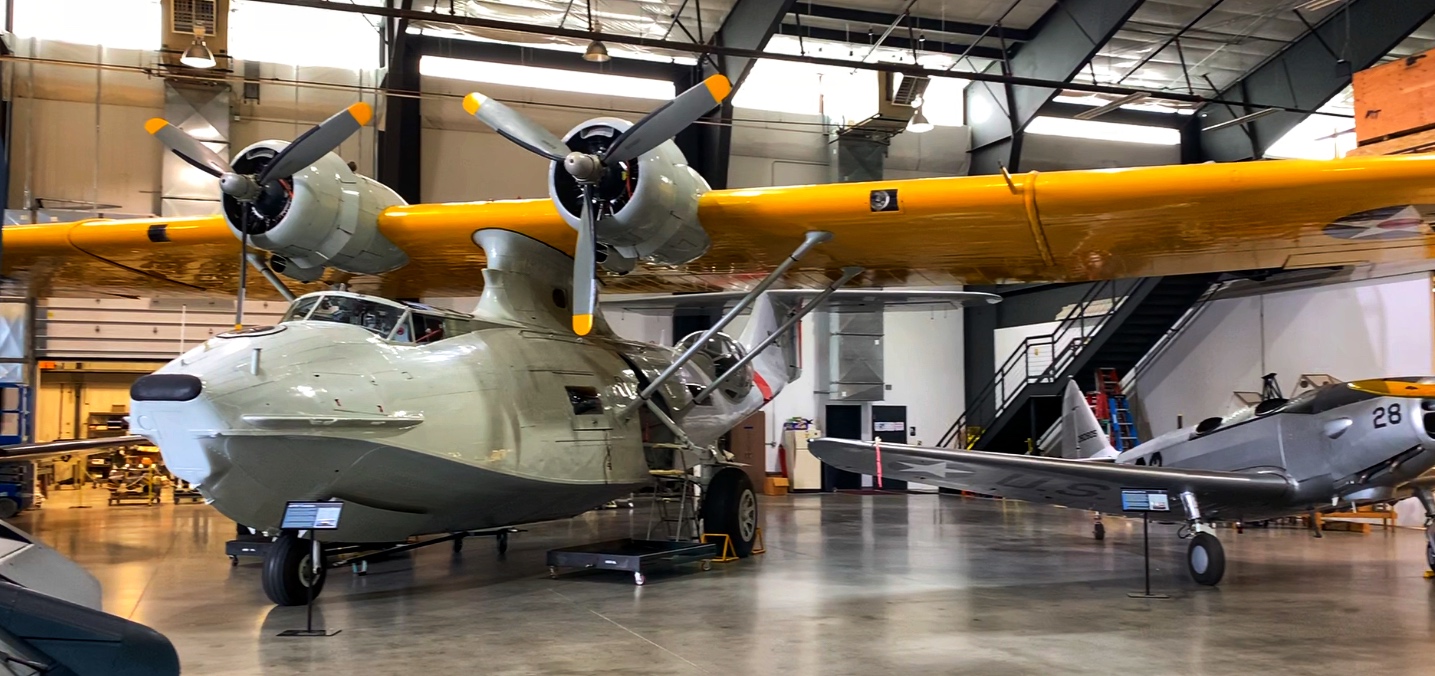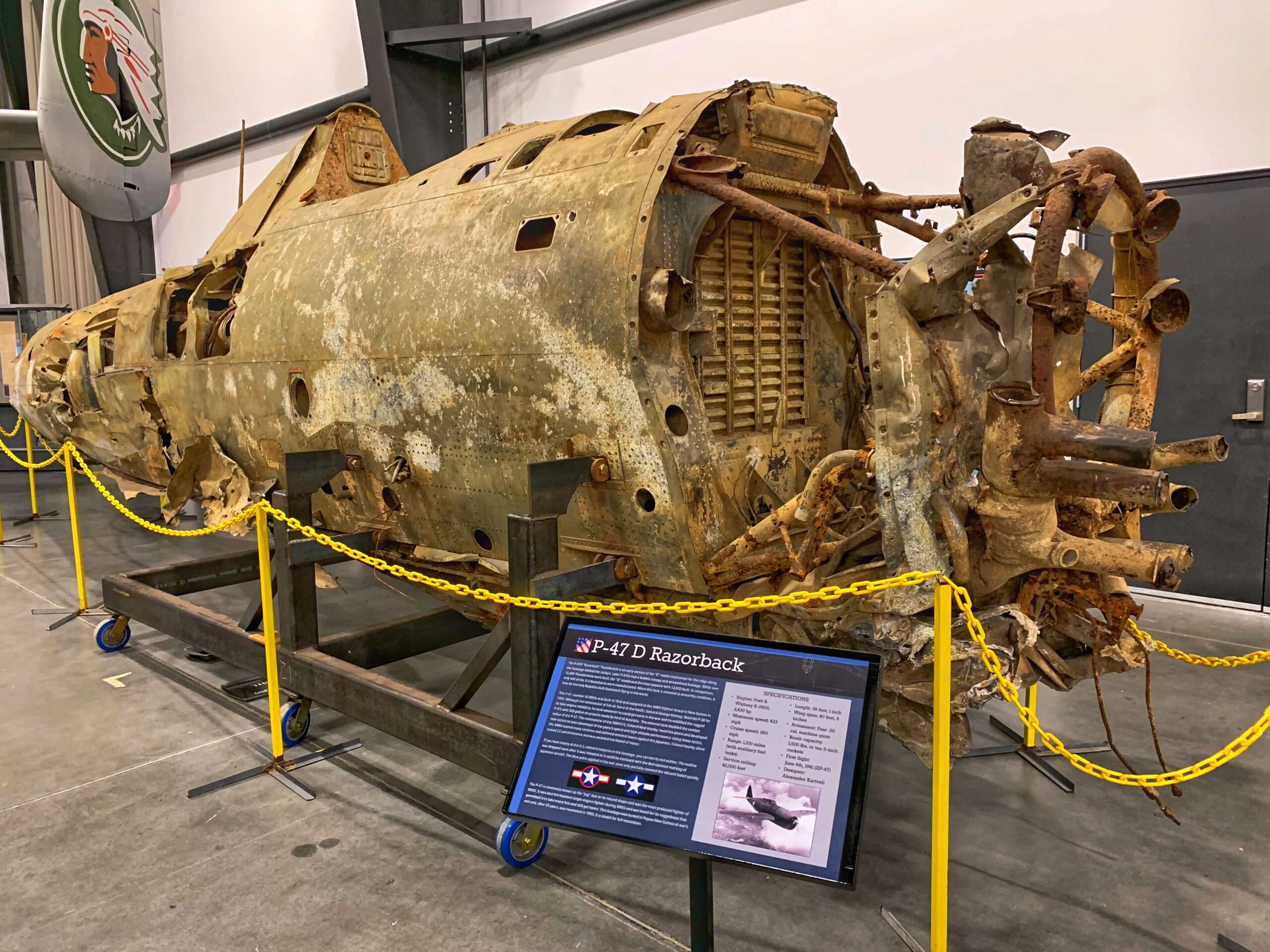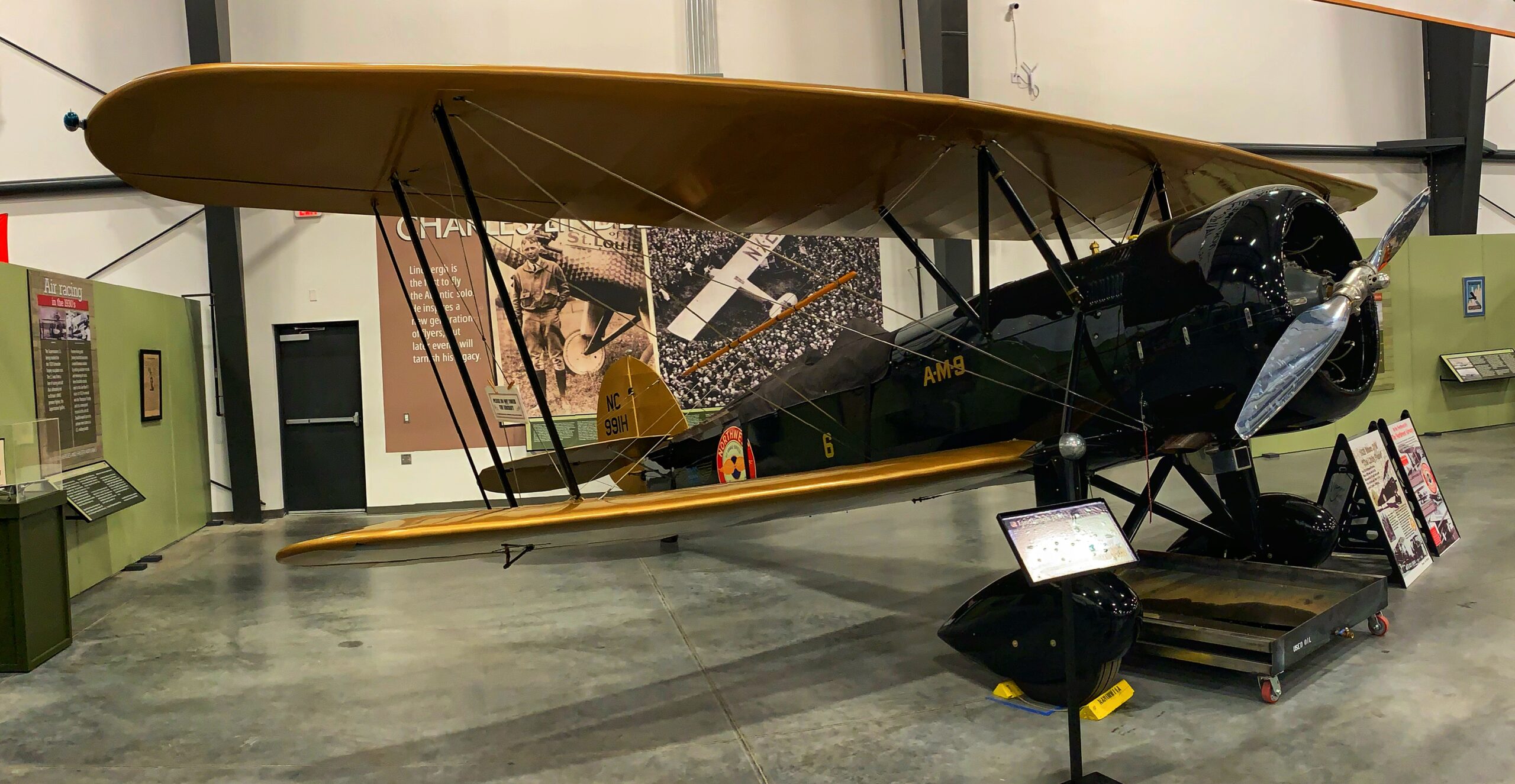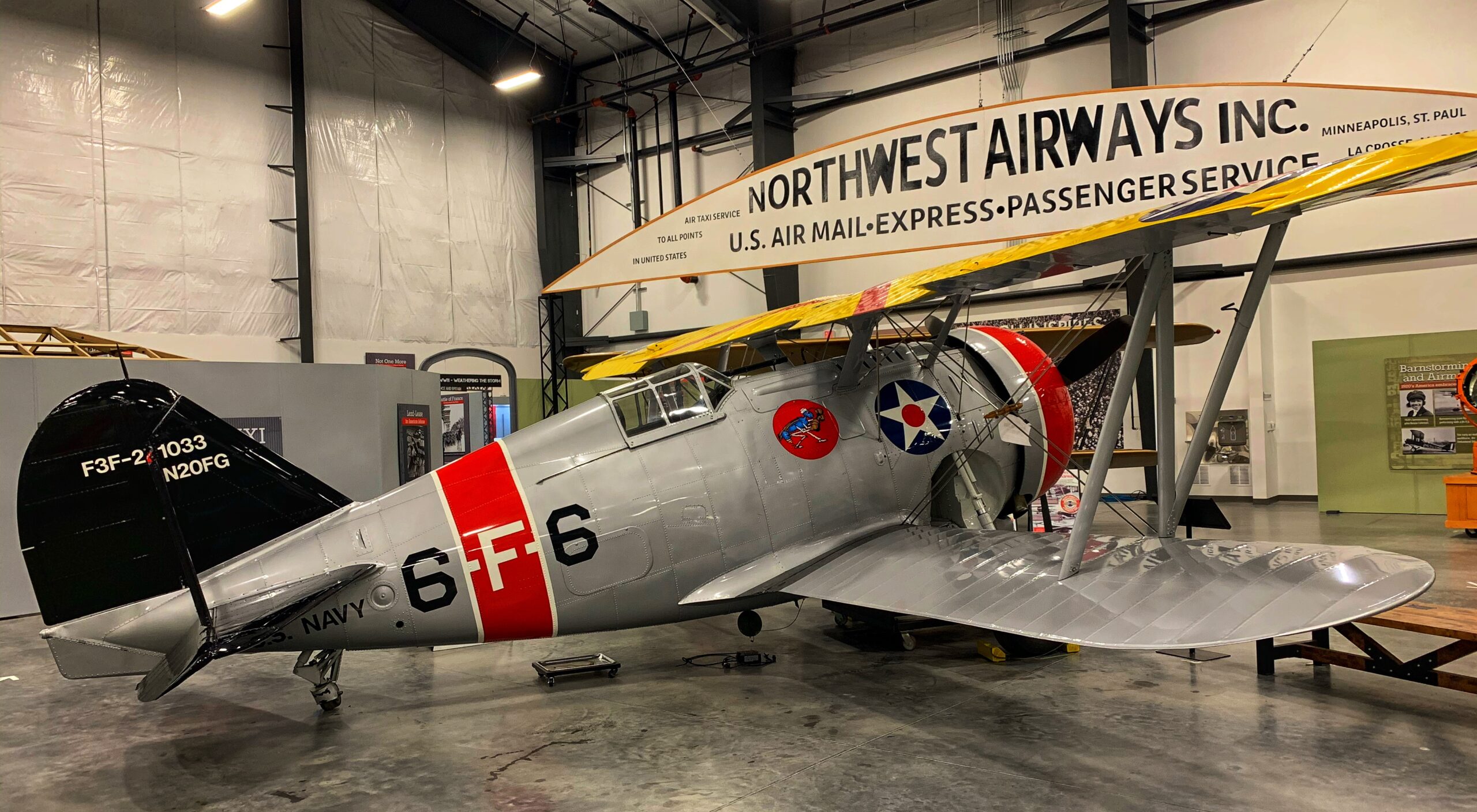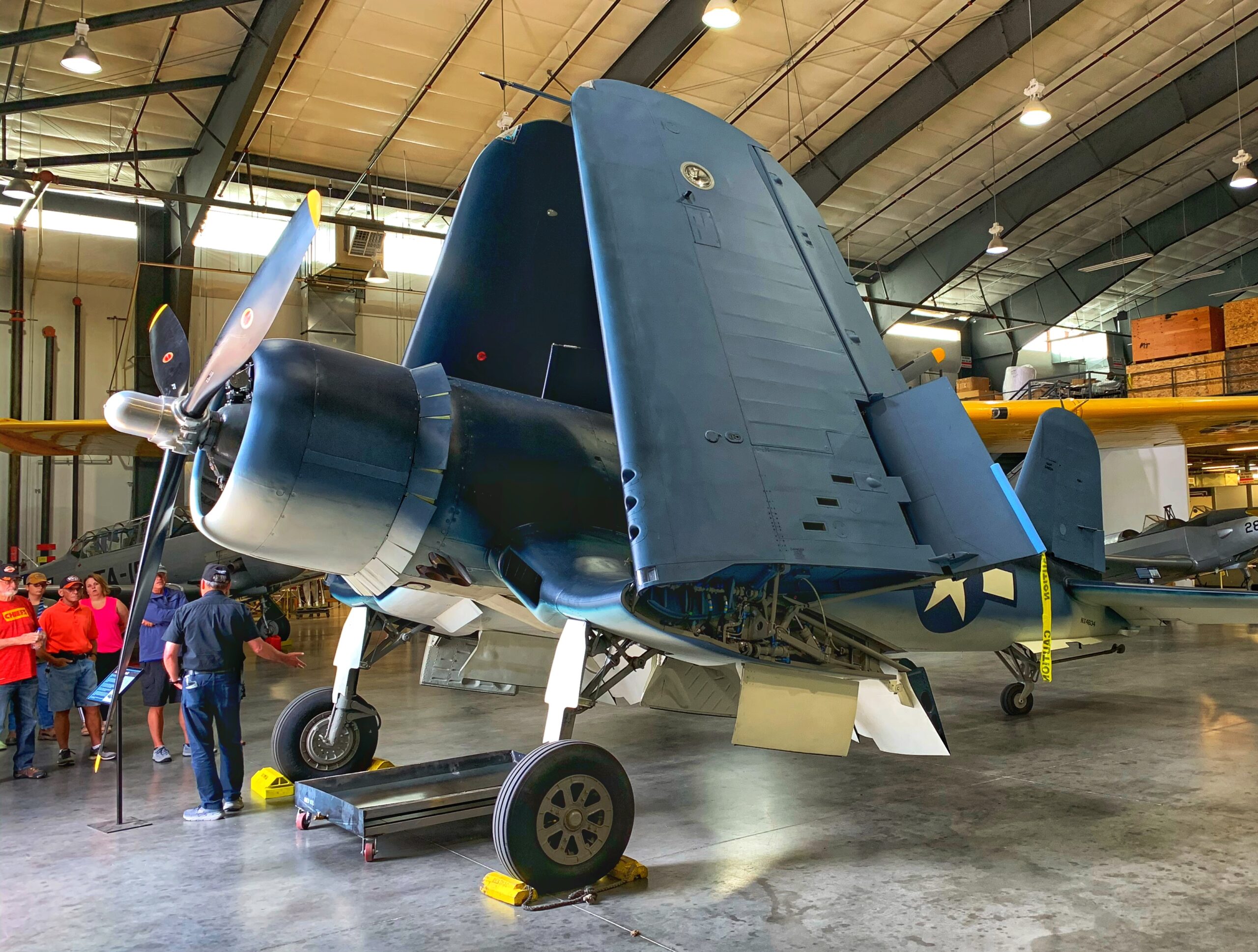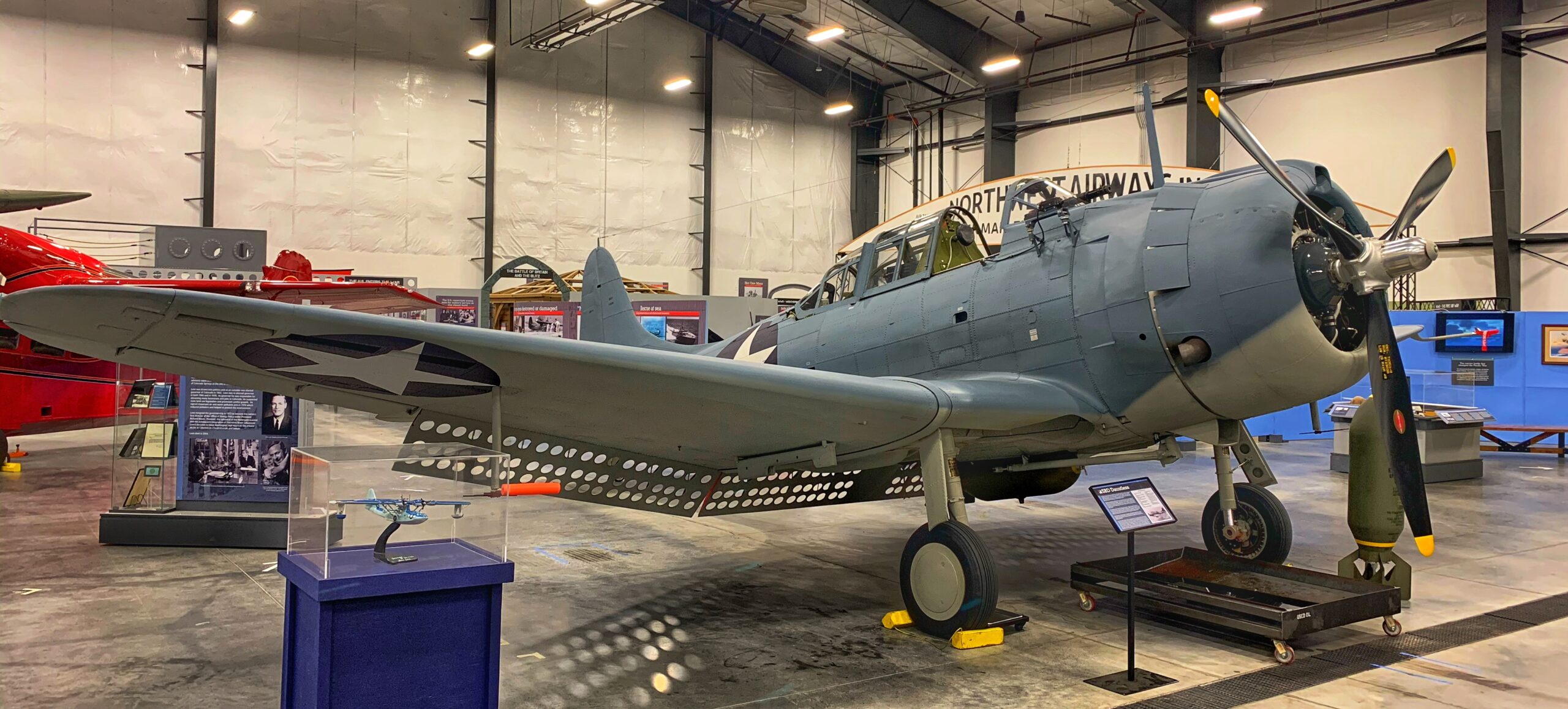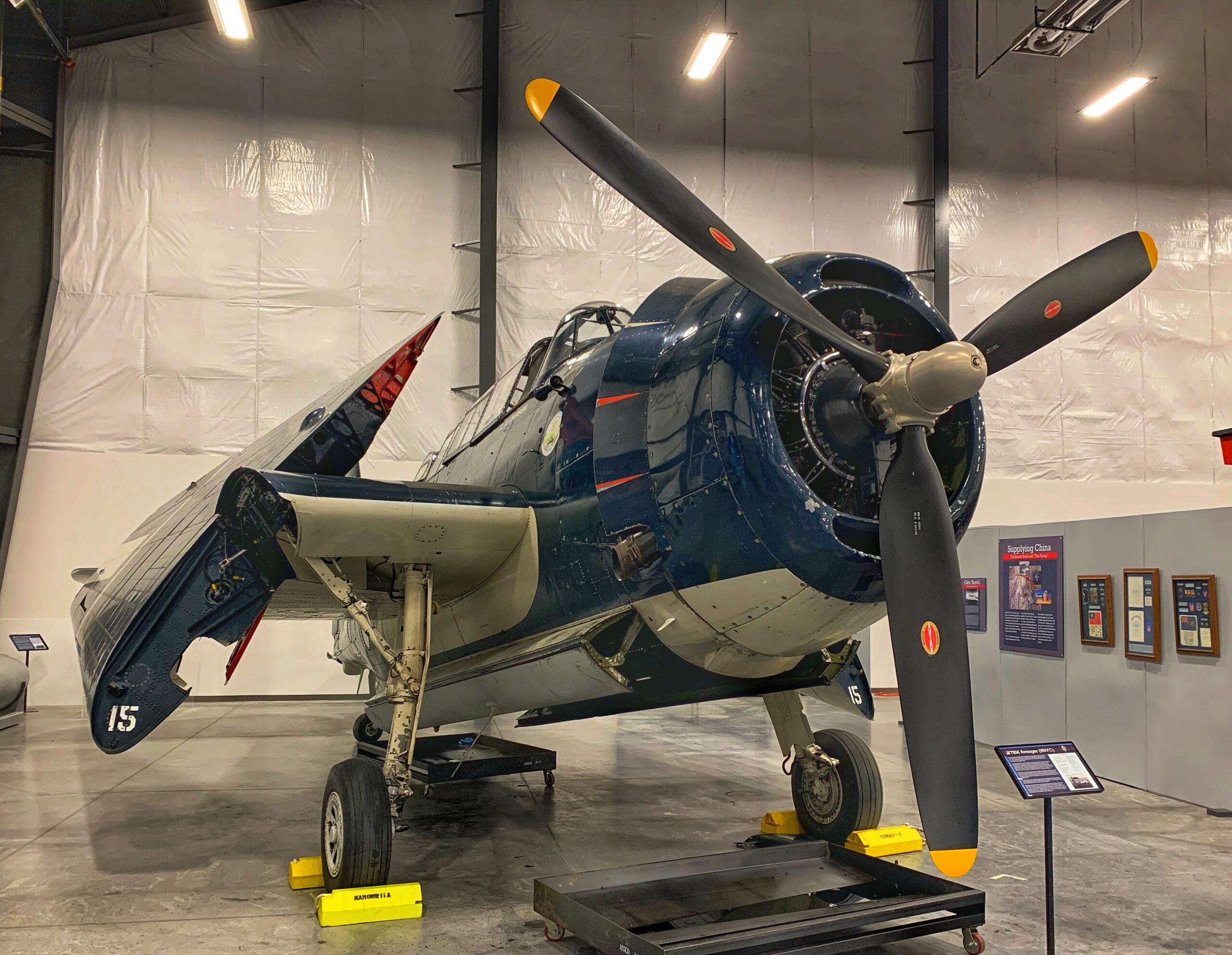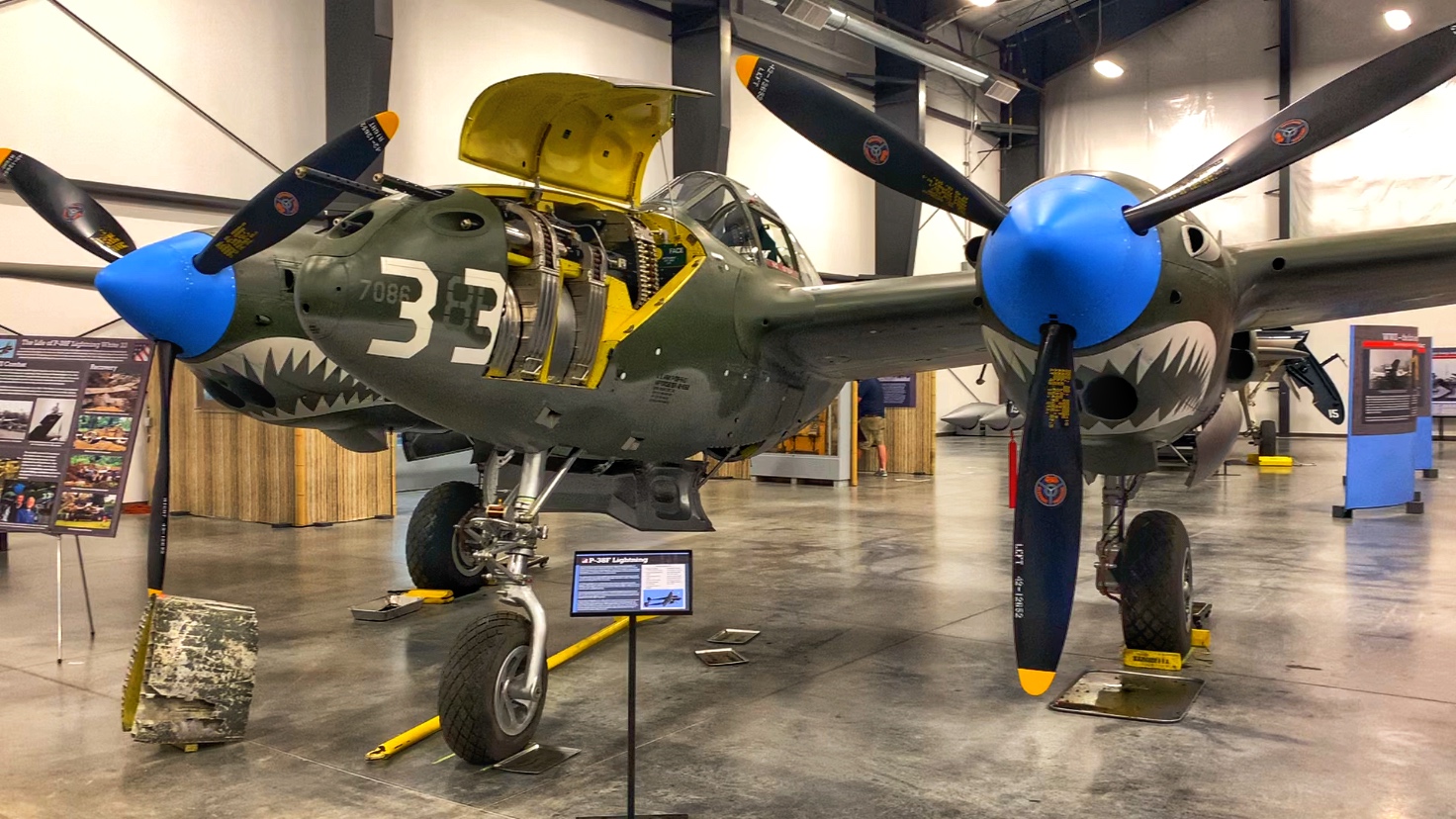I hadn’t visited this museum, even though it’s in Colorado Springs, because a new building was under construction. I finally made it on a breezy, rainy Saturday. I stayed about 3 hours. There are 20 or so planes in three hangers, all of them flyable. Not long after I arrived, I joined a tour to a fourth hanger where restoration work is done. The guide was a helicopter pilot in Vietnam.
The most interesting plane in that hanger was a PBY Catalina. From the sign, “This plane was delivered to the Royal Canadian Air Force, which used it for anti-submarine patrols flying from Reykjavik, Iceland. Post-war, the plane served at various locations around Canada before it retired from military service in 1962. It was converted to a water bomber and spent the next 32 years as a firefighting platform.”
As the guide talked about all that went into restoring a plane, I began to wonder if “restore” was the right word. I asked how much of the plane was original. He said 20% or less. He said there was an example of a recently recovered plane in the main hanger. Here’s what that one looked like.
To get from this to a flyable aircraft seems more like reproducing than restoring. But I quibble. Some of the planes in the museum were more like the Catalina —used for other things and restored to the way they looked during the war, but never as bad off as this.
Waco JYM. From the sign, “The Waco JYM was developed in 1929 to meet the increasing demand in the 1920s for rugged air mail planes. The JYM has a single back seat for the pilot and a forward seat that could handle two slim people or packages, with a metal cover that could enclose the packages or the empty seat. For mail, there were two compartments with a lockable cover in the fuselage, one forward and one aft of the pilot. Charles Lindberg flew this plane as part of his post-Atlantic trip public relations work for Northwest Airlines.”
Grumman F3F Flying Barrel. From the sign, “The Grumman F3F-2 was the last Navy and Marine biplane fighter. It entered service in 1936, and retired from front-line service in 1941. Its short operational life served to underscore its role in the Navy’s transition from biplanes to monoplanes. This aircraft was originally assigned to Marine Fighting Squadron VMF 2, later re-designated VMF-211, in 1937. Records indicate it crashed into a mountain at Wailuku, Maui, Hawaii Jun 24, 1941. It was recovered in 1980s and subsequently restored to the magnificent, flyable aircraft it is today. The insignia on the side of the aircraft include the blue wasp with boxing gloves of squadron VF-7 assigned to the U.S.S. Wasp and the fuselage ID of 6F6 of the Enterprise squadron.”
F3A-1 Corsair. A Navy fighter, build by Brewster. No Brewster’s Corsairs reached the front lines. From the sign, “This Corsair was assigned to VMF-914 at the Cherry Point Marine Corps Air Station. On December 19th, 1944, it crashed in a swamp ten miles southwest of Cherry Point while on a Ground Controlled Interception training mission. The pilot parachuted but was killed. The remains were salvaged in 1990.”
SBD Dauntless. From the sign. “The SBD Dauntless was the most effective U.S. dive bomber of WWII. It sank more Japanese shipping than any other Allied bomber. Navy and Marine SBD squadrons were credited with sinking Japanese carriers in the Battles of the Coral Sea, Midway, and Guadalcanal. This aircraft crashed in Lake Michigan on May 14th, 1944, following engine failure after takeoff from the USS Sable, a modified excursion steamer used for training at Great Lakes Naval Air Station. The aircraft’s remains were retrieved from Lake Michigan in the mid-1990s.”
Grumman TBM Avenger. From the sign. “The Grumman Avenger torpedo bombers built for the Navy originally carried the designation of TBF. The Avenger came into service in 1942 to replace the Douglas Devastator, but in its first combat at Midway in June 1942, it fared badly. Five out of six were shot down during an unescorted attack on Japanese ships.” There was no information specific to this particular plane.
Lockheed P-38 Lightning. From the sign, “The P-38 Lightning was the only successful twin-engine air superiority fighter of the war. It served in both Europe and the Pacific. P-38s were preferred in the Pacific because flying was either over dense jungle or the ocean; the safety of a second engine was important. The engines of the P-38 were turbocharged, so the aircraft maintained its excellent performance even at very high altitudes. The leading American Ace during WWII was Richard Bong with 40 victories, all scored in P-38s. For a time, Bong flew with the 39th Fighter Squadron. In total, 1,800 Japanese planes were destroyed by P-38s in the Pacific. This aircraft was dug out of the jungle near Finschhafen Airfield, Papua New Guinea, where it had been buried following the war. On a mission on December 31st, 1942, pilot Ken Sparks was flying this aircraft and was credited with two aerial victories. He downed one Japanese aircraft by gunfire and found himself engaged with another. While approaching each other a high speed head on, the Japanese banked left but hit Sparks’ outer right wing. It tore several feet from the wingtip, but the Zero lost its wing and crashed. Sparks went on to have 11 aerial victories in several different aircraft.”
North American B-25 Mitchell. From the sign, “In 1939, the U.S. Army Air Corps put in an order for new class of “medium'” bomber. The proposal called for a twin-engine plane capable of flying 300 mph, carrying a 3,000-pound bomb load, and having a 2,000-mile range. The B-25 became most famous for outstanding work in the Pacific Theater. There, specially modified aircraft carried eight (and sometimes more) machine guns that fired forward, attacking Japanese shipping and airfields. B-25s also skipped bombs off the water and into Japanese ships. “In the Mood” was built on August 29th, 1944, in Kansas City and became a trainer, first at Turner Field in Georgia, and then at twelve other fields, until it became surplus in 1958. She was a spray tanker for about ten years. It has flown off several carriers, was in the movie Pearl Harbor and is the only B-25 to takeoff from a carrier in dry dock.”
There were several other planes, but these were the ones that caught my attention. There were also several displays, most of which contained the personal effects of a particular WWII pilot. I get why they are there, but uniforms all begin to look alike after a while. The history of major air battles and missions were spaced throughout the hanger, but they were too brief to be intriguing to me — if I want to know about things like that, I read books. But still, it was well done and I wouldn’t be surprised if I go back at some point.
The gift shop included parts of recovered WWII that could be purchased, but I settled for a museum magnet and a small model of a P-38 Lightning.

